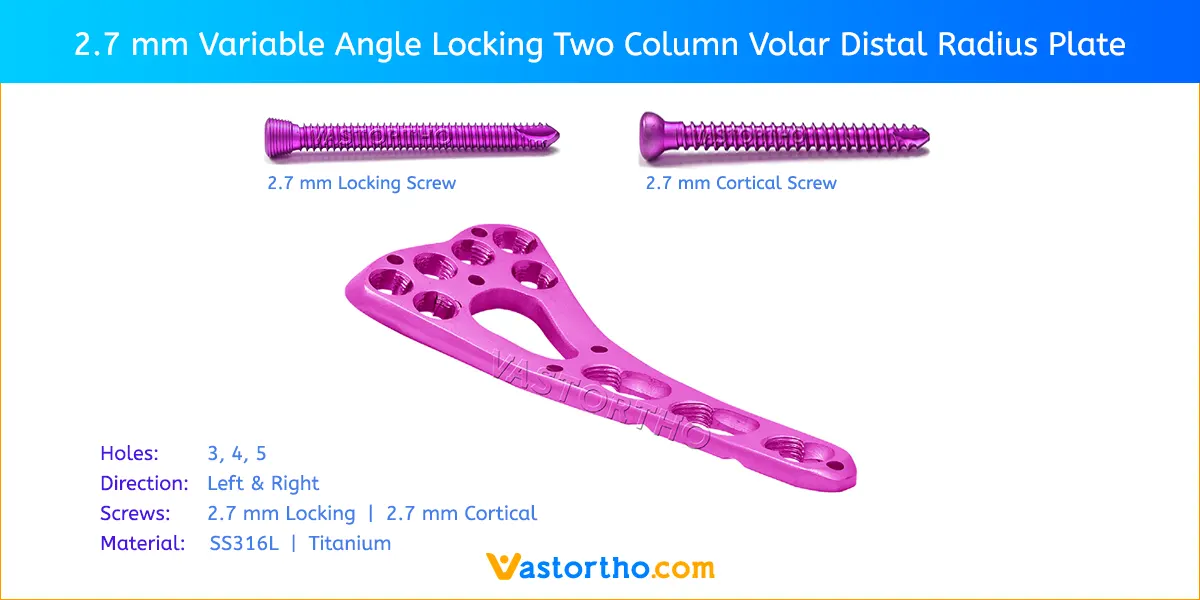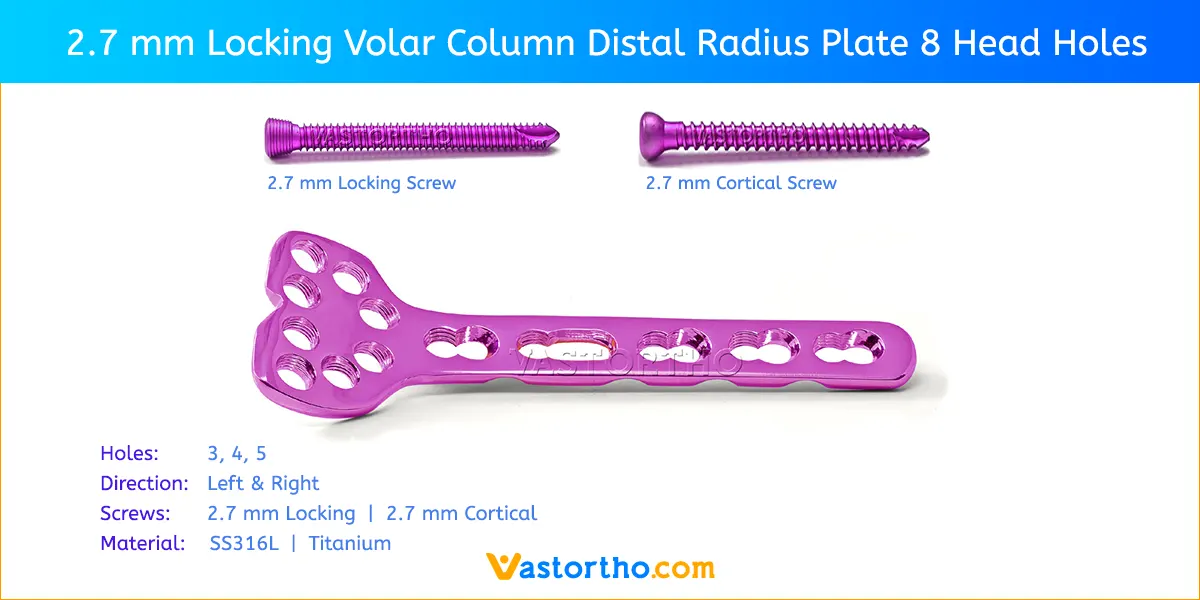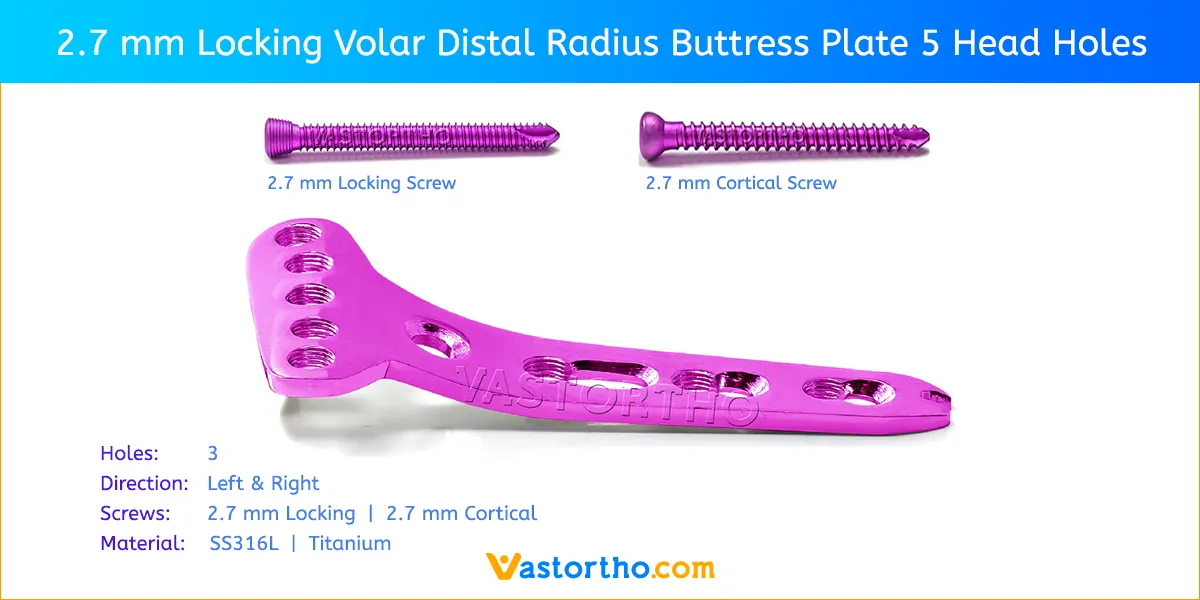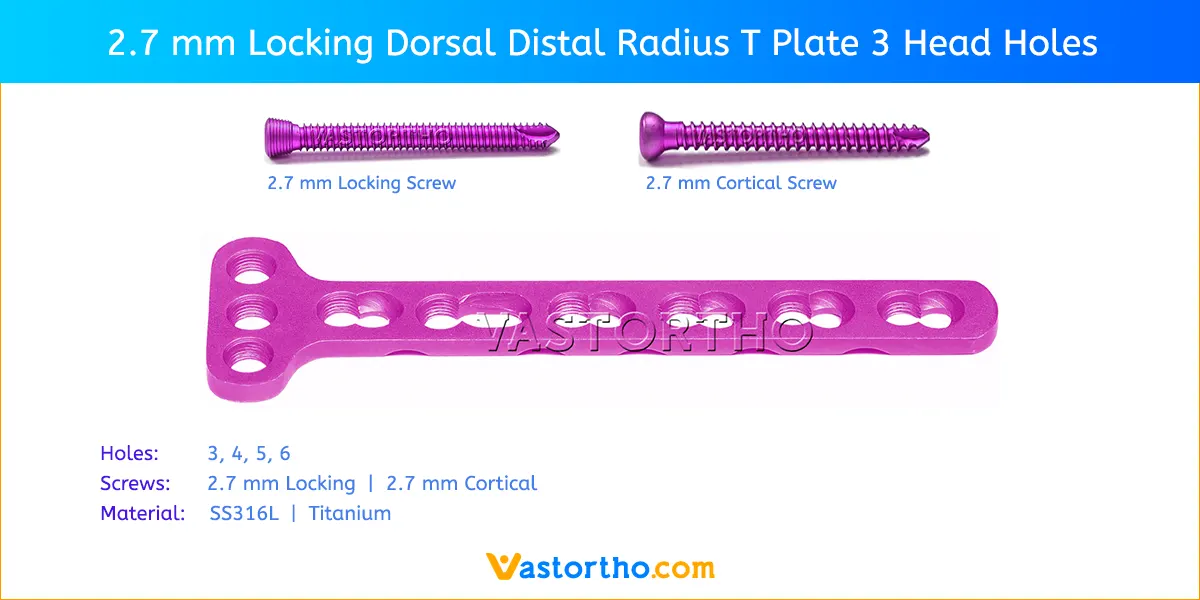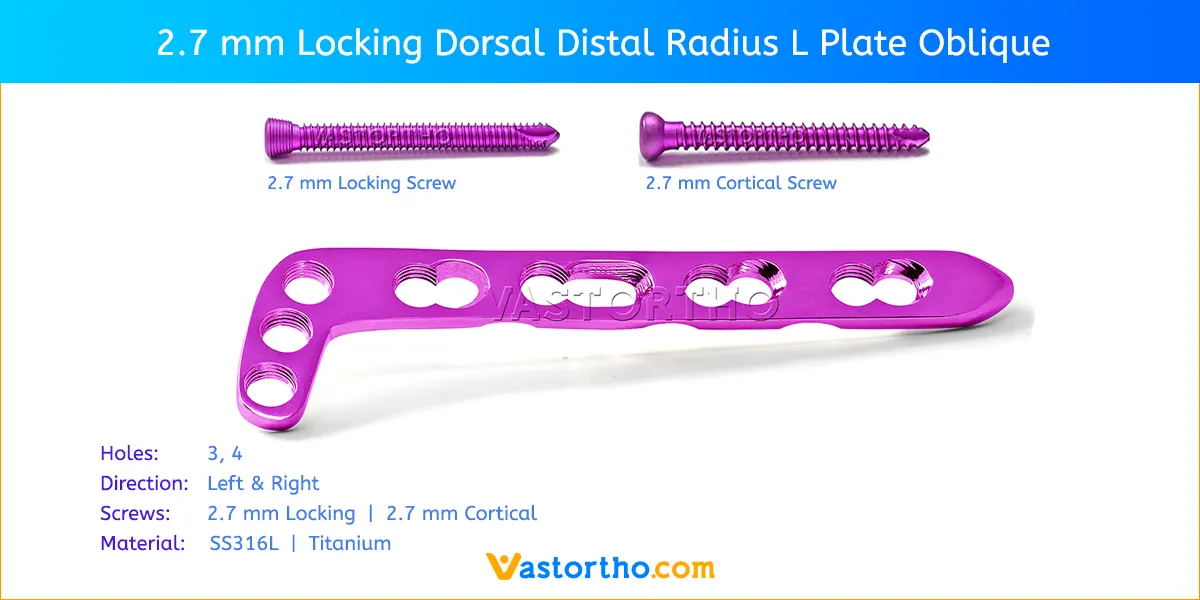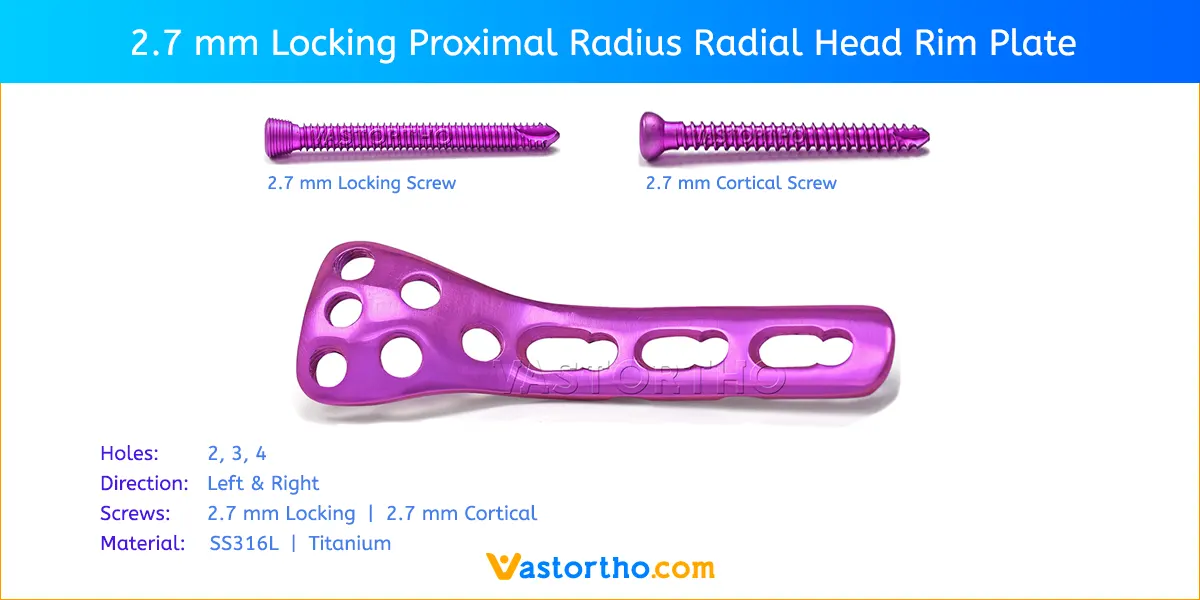2.7 mm Locking Dorsal Distal Radius Plate Specification, Uses, Sizes & Surgical Instruments.
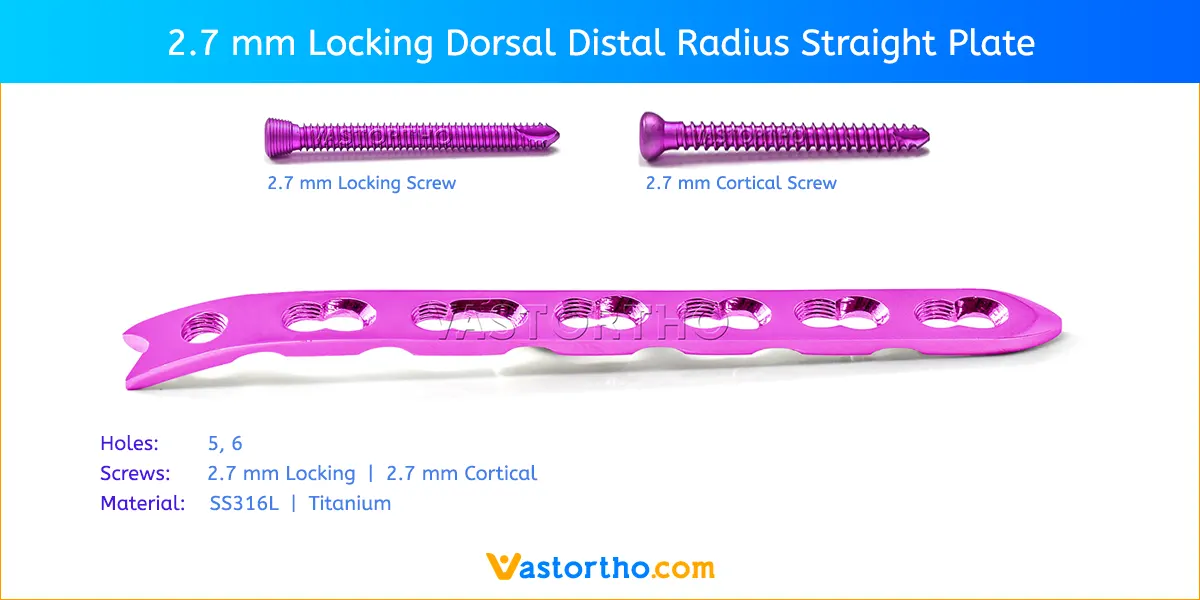
2.7 mm Locking Dorsal Distal Radius Plate Specification
- Plates available holes are 5 and 6.
- Available in both Titanium and Stainless steel.
- Plate has combi holes and round holes. Combi holes allow fixation with locking screws in the threaded section and cortex screws in the dynamic compression unit section for compression.
- The shaft holes accept 2.7 mm locking screws in the threaded portion or 2.7 mm cortical screws in the compression portion.
- Locking screws offer a fixed-angle construct to support the articular surface, reduce the need for bone graft, and obtain fixation in osteoporotic bone.
- 2.7 mm Locking Dorsal Distal Radius Plate allow implant placement to address the individual fracture pattern.
- Limited-contact surface reduces bone-to-plate contact and helps to preserve the periosteal blood supply.
- 2.7 mm Locking Dorsal Distal Radius Plate two-plate technique offers a strong construct for complex distal radius fractures and avoids removal of Lister’s tubercle.
- Choice of different lengths of plate eliminates the need to cut plates.
- Plates are contoured to fit the radial column and have a notched tip that allows them to fit on the radial styloid, adjacent to a temporary K-wire fixation.
- Low plate-and-screw profile minimizes potential for tendon and soft tissue irritation.
- Rounded edges minimize potential for tendon adhesion.
- Smaller plates and screws address fracture fragments individually, with less overall implant bulk.
- locking plate increases construct stability, decreases risk of screw back-out and subsequent loss of reduction. It also reduces the need for precise anatomic plate contouring and minimizes the risk of stripped screw holes.
- A complete Instruments Set is available for 2.7 mm Locking Dorsal Distal Radius Plate. General Instruments are available for this plate such as Plate Bending Press, Plate Holding Forceps, Plate Bending Pliers, Bone Holding Forceps, Bone Elevators, Bone Cutter, Bone Nibbler, Depth Gauge, Sleeve, Screw Driver, Trocar Sleeve etc.
2.7 mm Locking Dorsal Distal Radius Plate Uses
2.7 mm Locking Dorsal Distal Radius Plate is used or fixation of complex intra and extra-articular fractures and osteotomies of the distal radius and other small bones.


